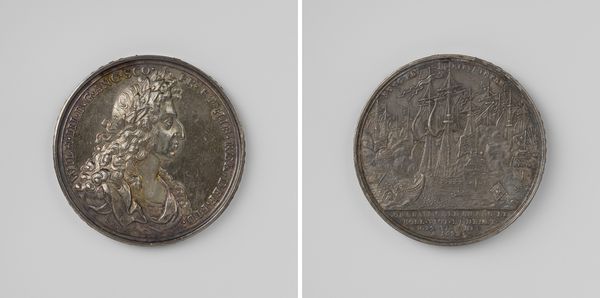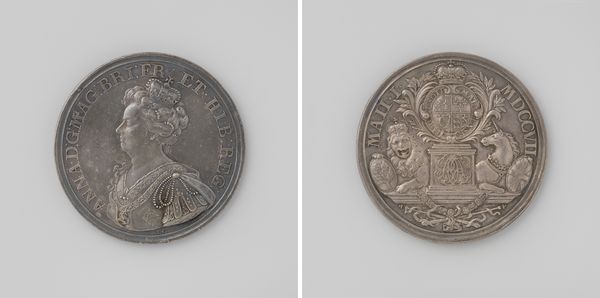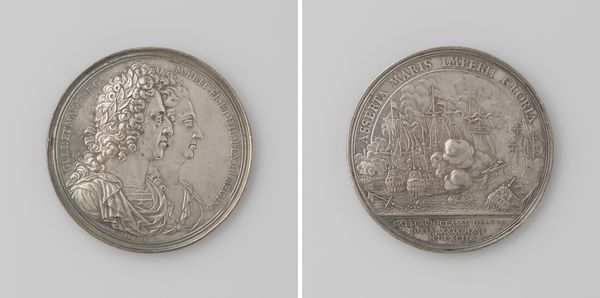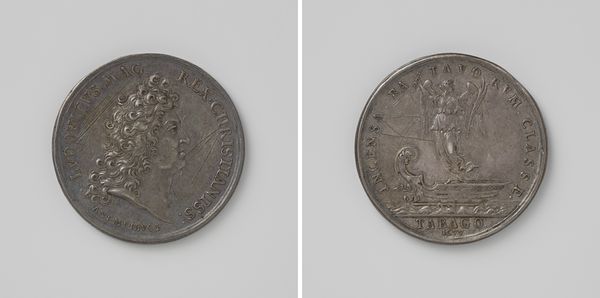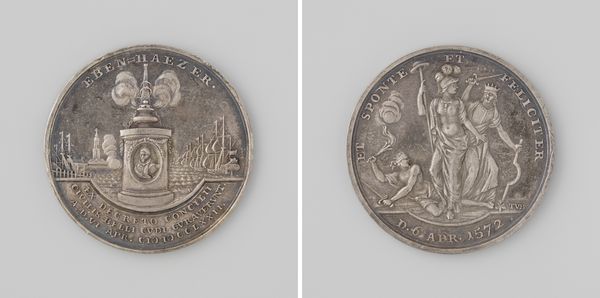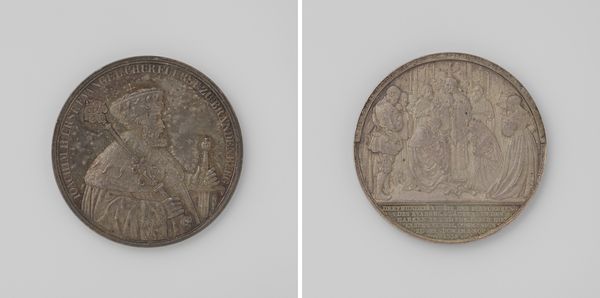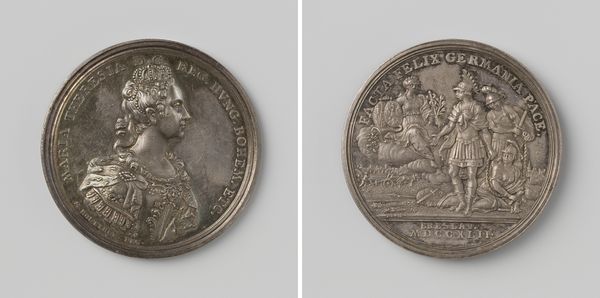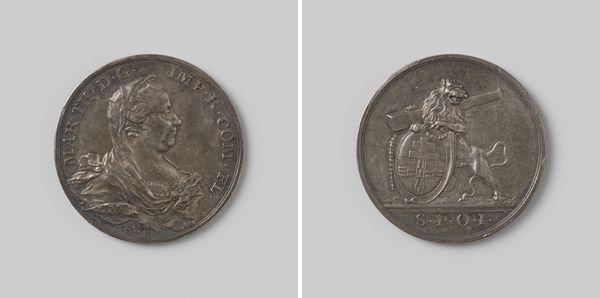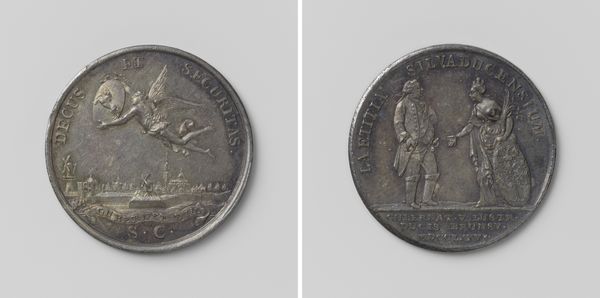
print, metal, engraving
#
baroque
# print
#
metal
#
geometric
#
history-painting
#
engraving
Dimensions: diameter 4.9 cm, weight 52.55 gr
Copyright: Rijks Museum: Open Domain
Curator: Here we have a Baroque print from 1691 by Jan (I) Smeltzing. It depicts the capture of Athlone, Galway, and Sligo by William III. The print is an engraving made with metal. Editor: My initial thought is this feels like a flattened sculpture. The relief and intricate detail give the impression of a miniature monument pressed into a single plane. It also feels like something that would be made for circulation and mass appreciation. Curator: Precisely! The context is crucial. This print served as propaganda, celebrating William of Orange's victories in Ireland. Its production and wide distribution would have played a crucial role in shaping public perception of the conflict, solidifying support for William's regime in this medium. Editor: Looking at the material itself, it’s fascinating to consider the labour involved in engraving those minute details onto metal. Each line, each curve, meticulously carved by hand. I wonder what type of workshop created this, how many artisans, and what their conditions were? Curator: Those workshops often operated under patronage, aligning their output with the political and social agendas of the elite. The success of artists like Smeltzing depended on their ability to visually articulate those agendas, reflecting a complex relationship between artistic skill and political power. Editor: Notice the portraits of William and Mary; this also drives the image towards the propaganda goal. Curator: Yes, absolutely. It represents a pivotal moment in history—the consolidation of power by the Dutch monarchy in England. Its creation was embedded in a larger political project that was being actively shaped and managed through imagery. Editor: In this particular moment in history, images were not yet easily replicated through mass manufacturing and distribution as happens nowadays. But they were on the cusp of these changes. That is probably also why we see this kind of metallic print become increasingly more widespread. Curator: A tangible emblem of a complex moment. These objects tell tales about those periods far more than they perhaps initially appear to convey. Editor: I agree; these visual narratives allow for some very complex investigations. They provide context for this work and also for all art of that period.
Comments
No comments
Be the first to comment and join the conversation on the ultimate creative platform.

